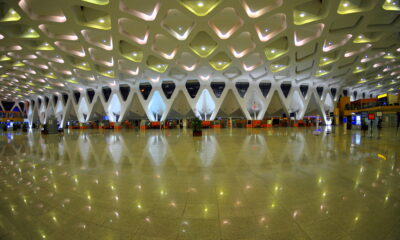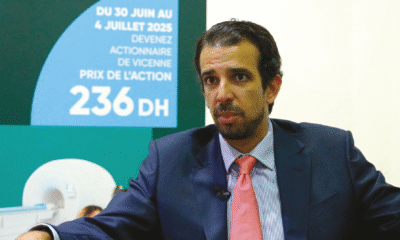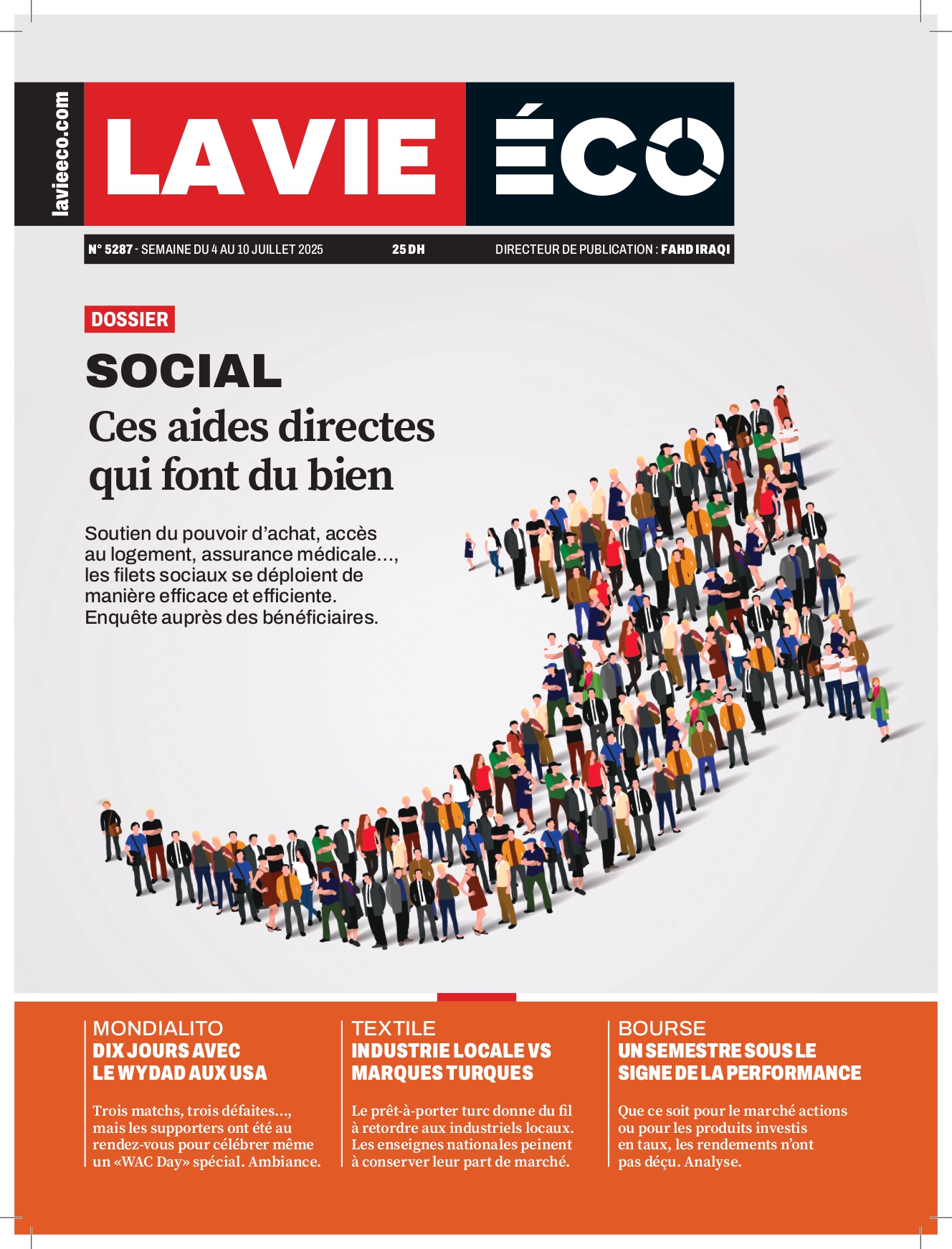Influences
Essaouira: Gnaoua takes to the open sea, World Music makes waves…
The Gnaoua and World Music Festival clacks its qraqeb, roars its guembri, and sets hearts in trance, between a tidal wave and a deep soul. Since its bold move in 1998, this meeting blends mâalems and virtuosos from around the world in a jubilant frenzy. The story of a 26-year dream, carried by the wind and a touch of madness.
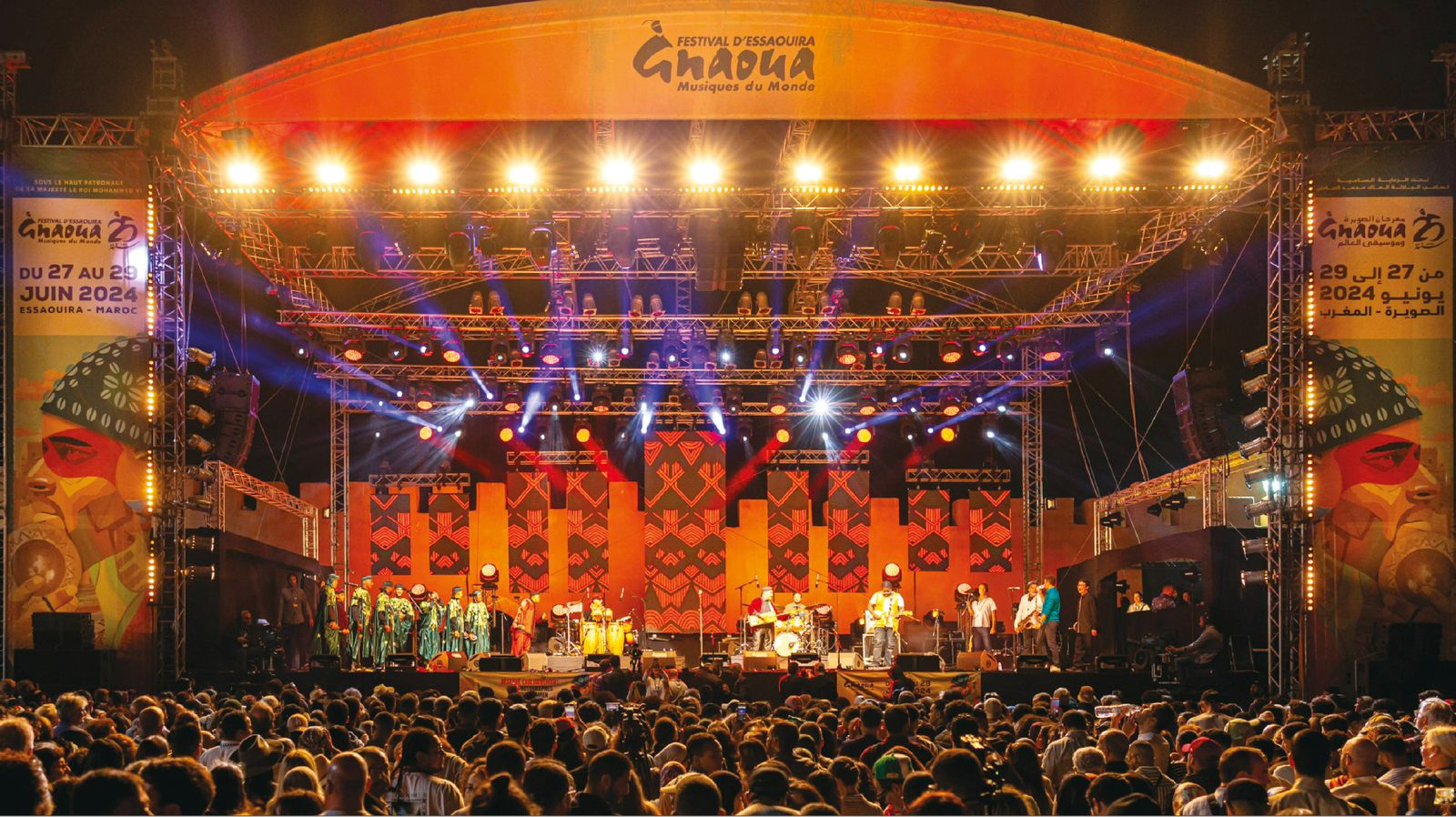
Twenty-six years ago, a somewhat crazy, almost provocative dream germinated in Essaouira: to make a Gnaoua music, then little known even to Moroccans themselves, the beating heart of a festival. A festival which, after its first spark, established itself as a quintessential image, an unmissable event where Gnaoua trance intertwines with world music.
Every last week of June, the drunken ship-city, tossed by the furious winds of the Atlantic but never shipwrecked, becomes the stage for a heroic fair. Hundreds of thousands of visitors, braving winding roads and the furnace heat, flock to bewitching Essaouira to drink in rhythms, guembris, and collective trances.
They come—the long-haired, the curious, the purists, the novices—to dive into a celebration like no other. Because here, no prohibitive ticketing: concerts are free (except for intimate evenings and those at the Borj, where one indulges in the luxury of closeness with the masters). The festival has “its nose in the air and a distracted gaze,” as a regular said, and it is precisely this assumed nonchalance that makes its charm.
In 1998, the idea seemed far-fetched. A festival dedicated to the Gnaoua? Potential partners shrugged skeptically. Too risky, too niche. Yet, some dared to bet on this improbable project. Result: a trial that was a masterstroke. The first edition, modest, gathered a handful of Essaouira lovers and hardcore Gnaoua fans.
A bubble of intimacy, a controlled organizational cocoon, almost familial. But the media, won over, fanned the flames. The echo was so resounding that, the very next year, 40,000 souls surged into the city. A tidal wave no one, not even the authorities, had seen coming. The city was unprepared, the alleys overflowed, and so did the hearts.
In 2000, the festival found its footing: 80,000 festival-goers, better-honed infrastructure, a budget swollen to 1.7 million dirhams. In 2001, it rose to 2.6 million, with the arrival of new partners.
When the vintage exploded, it shook the walls of the oceanic city and resonated far beyond. Western channels seized the event. “CNN,” “BBC,” “Arte”: all pointed their cameras at this Moroccan miracle. It was no longer the affair of a handful of insiders, bearded men in sandals, or seasoned music lovers.
The whole world discovered who the Gnaouas are: descendants of African slaves, rooted in Morocco, who married their animist traditions with the mystical impulses of Sufism. A lila?
Trance-cendence
A healing ceremony, a plunge into trance. The tools? Qraqeb (those metallic castanets that click like lightning), drums that rumble, a guembri that vibrates souls. And then, there is the mâalem, the master, and the moqadma, the priestess, guardians of millenary knowledge.
Essaouira turned this lexicon into a poem. This festival was first and foremost a dream of encounter. A space where social barriers fade, where the welder rubs shoulders with the banker, where the alley kid dances with the amazed tourist. “We wanted an open, supportive, cultural space,” confided the founders. But also an act of resistance: to make this music known, to take it out of clichés, misunderstandings, and wild appropriations.
Because yes, the West has always had a soft spot for Gnaoui rhythms, but too often at the price of shameless pillaging. Unscrupulous artists sampled, borrowed, stole, without a glance toward the mâalems. Essaouira changed the game: now, the world knows where these sounds, these pulses that hypnotize, come from.
And then, there is the mixing. Boris Vian said it for jazz: to avoid confinement, you have to push back the borders. In Essaouira, Gnaoua music opened up, without denying itself. It rubbed shoulders with jazz, reggae, world music, in a harmonious dance for some, graceful for others.
No question of denaturing the Gnaoua essence: here, it’s the guests who adapt, who bend to the syncopated rhythms of the qraqeb, to the deep lines of the guembri. “Pop Gnaoua” was born, and it sparked.
Take these legendary meetings, etched in memories: Pat Metheny, Joe Zawinul, Marcus Miller, Oumou Sangaré, Salif Keita, Youssou N’Dour. Giants of jazz and world music, all came to sit at the table of the mâalems.
Trance-fusion
This year again, breaking down barriers reigns. The stage ignites with encounters promising thrills: Maâlem Hamid El Kasri and the Bakalama company, Abir El Abed and Kya Loum; Maâlem Houssam Gania alongside Marcus Gilmore; Maâlem Mohamed Boumezzough, surrounded by Anas Chlih, Aly Keïta, Tao Ehrlich, Martin Guerpin, Quentin Ghomari, and Hajar Alaoui; Maâlem Khalid Sansi with Cimafunk; Maâlem Morad El Marjan in dialogue with Dhafer Youssef; Asmaa Hamzaoui & Bnat Timbouktou sharing the bill with Rokia Koné.
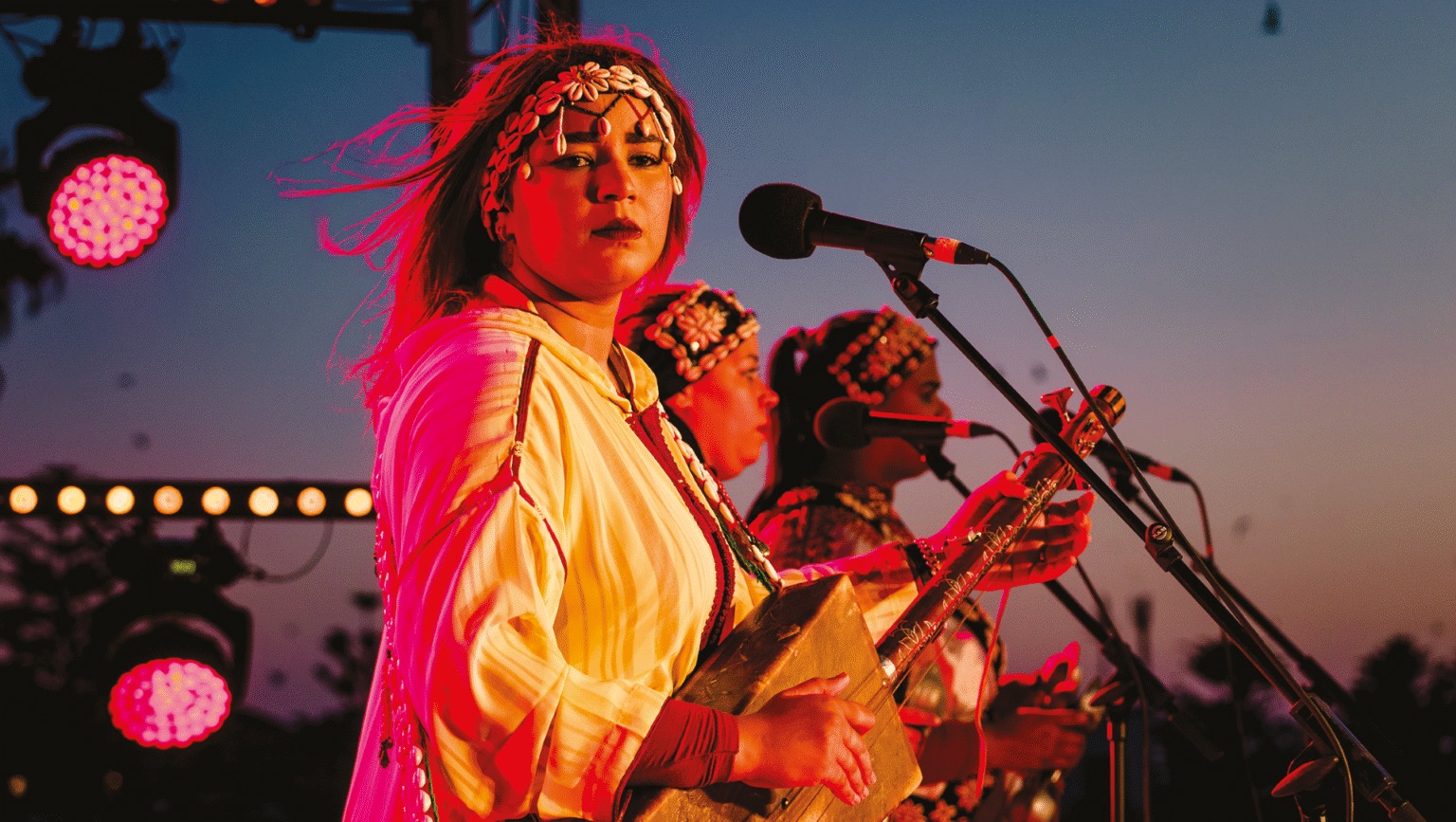
The flames of the Gnaoua were also fueled by bold Mâalemat, like Asmaa, daughter of Maâlem Rachid El Hamzaoui.
These names, these leading figures, carry the promise of a staggering mix, where notes fly free and bold.
And here comes the time to enter the temple: Maâlem Mustapha Baqbou, tutelary figure of the Gnaoua brotherhood, will set the stage ablaze alongside his disciple Najib Oubelkas, in a face-to-face where tradition weaves links with the momentum of renewal.
Mohamed Kouyou, tireless traveler of trances, will distill his ritualized art, tinged with bold flashes pushing boundaries. The new wave of mâalems – Driss Semlali, Mehdi Kardoudi, Yassine El Bour, Redouan El Kasri – each carried by their baraka, embodies this incandescent succession. They hold high the Gnaoua flame, while passionately leading it toward resolutely modern horizons.
But the Gnaouas are not alone in enchanting. The Hmadcha and Aïssaoua brotherhoods, with their hypnotic rituals, come to weave their own trances, adding mystical colors to this already rich tableau. And for those whose soul yearns for a smoother, more intoxicating trance, CKay, a shining star of afrobeats, will pour out a contemporary ecstasy, sweet as a summer breeze.
Tiken Jah Fakoly, colossus of African reggae, will thunder his psalms of justice and dignity, carried by a fervor that transcends borders, a universal voice sculpted in the brilliance of struggles. Fehd Benchemsi & The Lallas, bold alchemists, will reinvent the Moroccan heritage, infusing it with gospel and pop in a surge as fervent as mischievous, a cocktail that sparkles and enchants.
The Leila, free and untamable spirit, will shake up the codes, marrying reggada with rock riffs and verses of social poetry, like a storm of ideas in a starry sky. Ribab Fusion, led by the intrepid Foulane Bouhssine, will make the Amazigh soul vibrate, blending it with funk, blues, and pop pulses, in a wild dance that will raise even the dunes.
DUOUD, those wild children of the oud, Mehdi Haddab and Smadj, will strike the crowd with an electro oud, weaving a sonic vertigo where North African roots, Mediterranean whispers, and urban beats intertwine. Finally, the Nishtiman Project will lead hearts on an odyssey through the Kurdish melodies of Iraq, Iran, and Turkey, unveiling a cross-border heritage of breathtaking splendor, a song that unites lands and souls.
Twenty-six years that this festival has grown, carried by a handful of fighters who transformed a crazy dream into an unmissable event. Year after year, it expands, roots itself, attracts crowds from all over the world. The work accomplished is titanic, without equal.
The Gnaoua and World Music Festival is a wave, a wind, a trance that carries everything in its path.
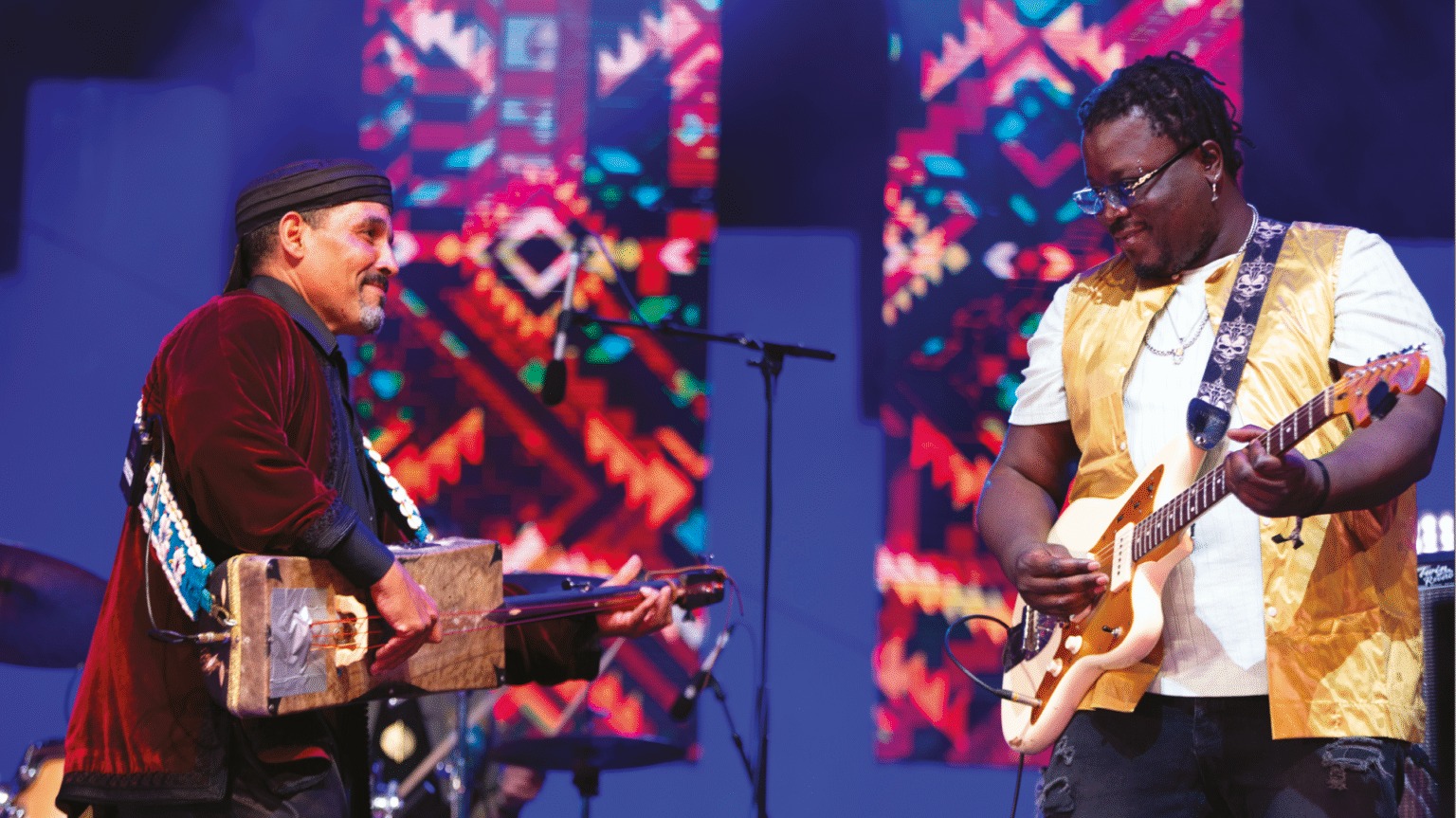
For 26 years, the Festival has been making the ocean city dance, building bridges between Gnaoua and Music from elsewhere.

